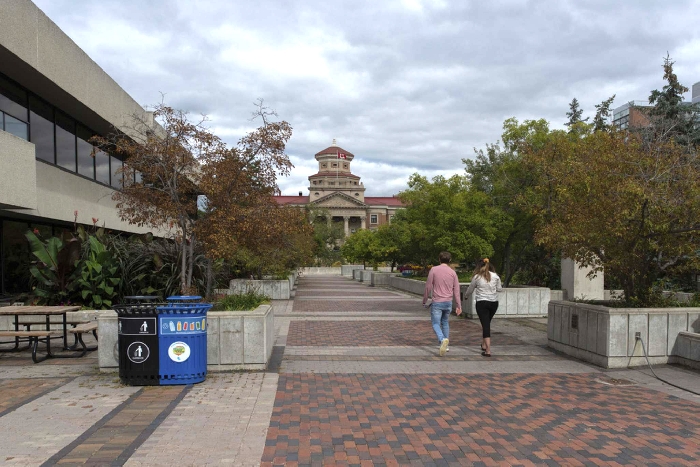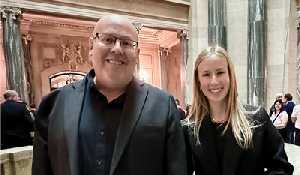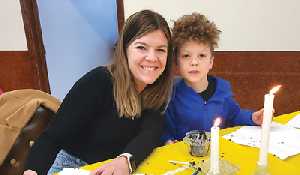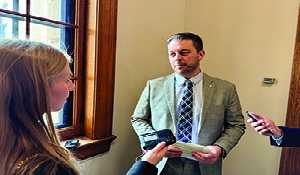Online learning replaces campus experience
Universities in Manitoba focusing on online learning
September 6, 2020, 4:22 pm
Maggie Macintosh, Local Journalism Initiative Reporter


The University of Manitoba morphs into the third-largest municipality in the province once its school year is in full swing.
Next in line after Winnipeg and Brandon, the post-secondary institute boasts a student population of upwards of 30,000 and its staff roster surpasses 9,500.
Its amenities — restaurants and road construction included — also help play the part.
This fall, the Fort Garry campus will be a ghost town.
Computer science student Lyka Sal-Long stopped by the bookstore Friday for what she said would likely be her first and last visit this semester.
“I would’ve preferred coming to campus. It’s hard to study when you’re isolated,” said Sal-Long, her voice muffled by a black face mask.
In stark contrast to public schools, universities and colleges are asking staff and students to study and research at home. Their campuses will remain all but empty when K-12 students return to Manitoba classrooms after Labour Day.
The policy differences are not lost on David Winter, an associate professor at Brandon University and parent involved with a back-to-school campaign that calls for smaller class sizes and remote learning options for K-12 students.
“One of the reasons we have so many profs involved in Safe September (MB) is we see such a big disjunct between what’s happening at the public schools and what’s happening at the universities. My 18-, 19-, 20-year-old students are all being protected through social distancing; most of our classes are online this fall,” said Winter.
BU is offering in-person music lessons and science labs, but large lecture-based courses will be entirely online.
At the U of M, less than 10 per cent of all courses will have an in-person instructional element this fall. That figure is even smaller at the University of Winnipeg, where in-person delivery accounts for only 5.8 per cent of the total offerings.
Both Winnipeg-based schools committed to ongoing online learning in May; Brandon confirmed its plans in June.
“We still believe it was the right decision,” said Todd Mondor, deputy provost of academic planning and programming at the U of M, and chairman of its COVID-19 recovery steering committee.
Mondor said the U of M wanted to give all students time to plan since many move from other countries or rural communities to study in Winnipeg. Instructors and support staff also needed time to pull off a “herculean” transition, he added.
The different reopenings in K-12 buildings and university campuses come down to policy makers weighing what is known about how COVID-19 spreads, student well-being and the ability to learn remotely, said Winnipeg epidemiologist and EPI Research founder Cynthia Carr.
“We’re looking and learning all the time, but the research still seems to show that kids 10 and under are least likely to be infected and least likely to spread (novel coronavirus),” said Carr.
Meantime, she said the social nature of universities has been proven to put students at risk. In the United States, upwards of 51,000 COVID-19 cases have been identified on more than 1,000 campuses.
“It’s not just on campus, it’s what kids do when they’re back at university — they socialize at different places (namely, in nightlife circles and on transit),” said Carr, during a phone call from Kingston, Ont., where she was helping her daughter move into a residence with strict physical-distancing protocols at Queen’s University.
“The more people are together, the more opportunity for risk.”
The social aspect of university is what Amber Rose Alupay said she is most worried about missing out on this year, given she is starting her history and French studies on a virtual U of W campus.
“I had this idea that I would leave high school, find people like me and it’ll all be good and dandy,” said Alupay, 18.
However, Alupay said she knows it is safest for her to stay home to limit her family’s contacts — a number that will soon increase exponentially when her two younger siblings start school next week.
Back-to-school is also top of mind for Heather Milne, a U of W English professor and parent of a child resuming school full time Sept. 8.
Milne said she finds it contradictory K-12 schools are grappling with space challenges when they could implement proper physical distancing by moving classes to convention centres and empty university campuses.
“It does strike me as interesting that there will be all of these university classrooms that are already designed as learning spaces sitting empty,” she said.
Milne plans to work remotely indefinitely.



































